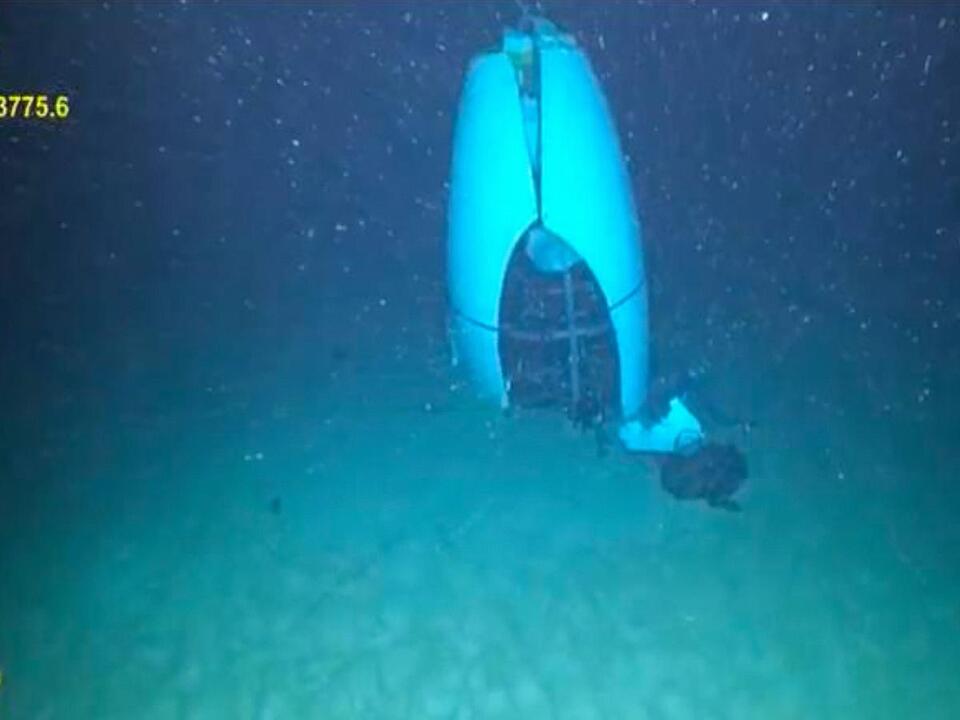Physical Address
304 North Cardinal St.
Dorchester Center, MA 02124
Physical Address
304 North Cardinal St.
Dorchester Center, MA 02124

The recovery of a piece of the Titan submersible’s carbon-fiber hull following its catastrophic implosion revealed several concerning “anomalies,” according to a National Transportation Safety Board (NTSB) engineer. This testimony was part of an ongoing hearing by the U.S. Coast Guard centered around the June 2023 incident during a deep-sea dive to the Titanic wreck.
During the hearing, Don Kramer, the acting chief of the NTSB’s materials laboratory, shared insights into the examinations conducted on the Titan’s hull material. His team discovered significant irregularities, including “waviness, wrinkles, porosity, and voids” within both the composite material and the adhesive joints used in assembly.
The analysis extended to a piece of debris reclaimed from the ocean floor. They noted similar issues, with the recovered hull presenting features such as “waviness and wrinkles within the hull layers” and voids within the adhesive holding those layers together. Additionally, there were signs of “rubbing damage” at one of the adhesive joints.
Kramer indicated that the debris found on the ocean floor exhibited significant delamination, which is the separation of the material into layers—mostly occurring within or adjacent to co-bonded adhesive interfaces. When questioned by OceanGate’s legal team about whether the observed delaminations, voids, or rubbing damage existed prior to the implosion, he refrained from offering an analysis regarding their timing.
Further inquiry into whether any of the identified issues could have led to the implosion yielded another non-committal answer from Kramer, who stated that such possibilities are still undergoing internal review.
The discussion also redirected to an incident that transpired during a previous dive on July 15, 2022, referred to as dive 80, where passengers heard a loud bang. This auditory event was recorded by the Titan’s real-time monitoring system, which contained sensors specifically designed to detect sudden acoustic events and monitor mechanical strain.
Kramer explained that the hull’s strain response showed notable changes after the incident on dive 80, revealing a shift in data across four of eight strain gages during subsequent dives in 2022. He confirmed, “Those changes persisted from dive to dive.” Interestingly, he highlighted that similar strain responses were not observed during dives prior to dive 80, suggesting a possible alteration in the structural integrity of the hull.
However, Kramer stated that strain data was not available for any dives conducted in 2023. He noted a minor “shift” had been recorded after the bang during dive 80, according to former OceanGate engineering director Phil Brooks, who testified earlier. Brooks remarked that no further anomalies were detected in the strain data from subsequent dives, suggesting that everything seemed typical post-dive 80. Following this event, OceanGate’s leadership, including co-founder and CEO Stockton Rush, opted to continue with the planned dives.
When asked how the team concluded the changes in strain response from the available graphs, Kramer emphasized that determining such changes might be subjective. Brooks elaborated on Rush’s hypothesis that the loud bang could have been attributed to the frame “readjusting back to its original shape” as the Titan ascended.
Kramer affirmed that the investigation by the NTSB remains active, so his presentation was somewhat limited in scope. Following the tragic implosion that claimed the lives of five individuals, including Rush, OceanGate has since ceased all exploration and commercial activities.
The two-week hearing, which aims to establish the facts leading to the implosion and formulate recommendations, is expected to conclude on Friday.
Source: ABC News



